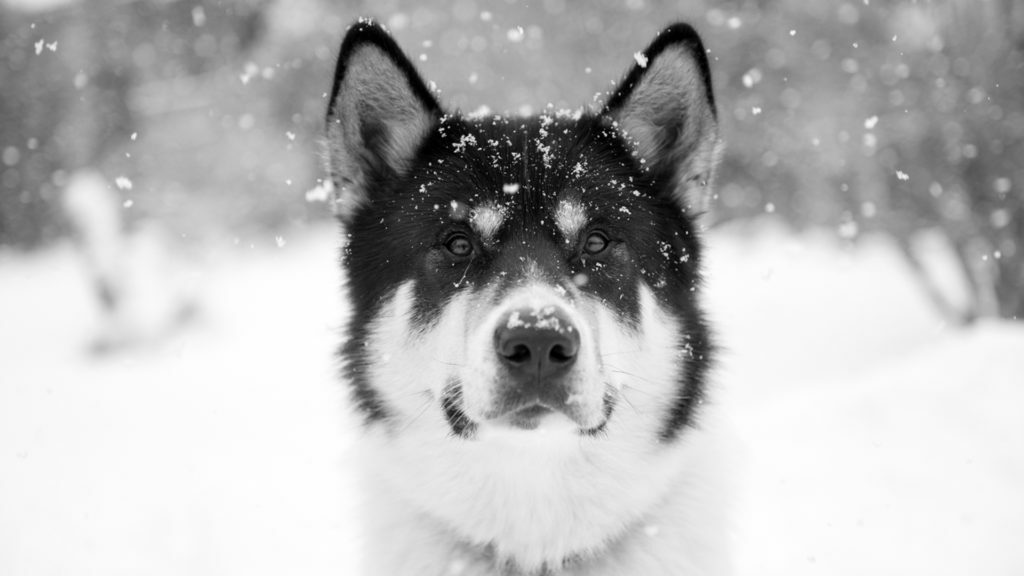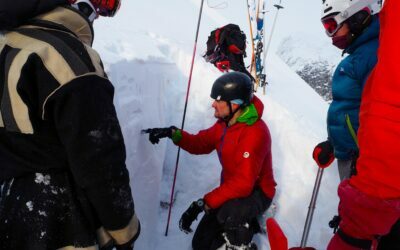What to take in a first aid kit?
Compresses, cotton wool, a roll of bandages (preferably self-adhesive) and dressing tape should be included in a first aid kit. An extended expedition will require a more extensive first aid kit, of course – more of everything, and items specific to your dog. The dog’s first aid kit should never leave the bag as long as the dog’s with you.
You can buy ready-made first aid kits from your vet and at good pet stores. Or, of course, make one yourself. You can buy bandages and equipment from the vet, the pharmacy, and pet stores. Don’t go over the top: it’s not necessary to prepare for Ragnarok when putting together first aid equipment for your dog – but it is pretty essential to be prepared for the most common and critical situations that can arise when out in the wilds with a hound. Use common sense; chat to your vet if you need answers.
If you don’t have access to clean water, you should always have a bottle of saline (salt water) with you to clean the wound.
Write down contact information for the nearest vet and animal emergency room before you set off. Maybe even keep it on paper in the first aid kit itself.
ID tags and vaccination
All dogs should be ID tagged by a vet. And they should also be taken to the vet once a year for a health check and all the necessary vaccinations. Contact information on the collar is also a pretty sensible idea.
For short tours:
- Bandages (at least enough for a pressure bandage)
- Compresses
- Petflex (self-adhesive elastic bandage)
- Cotton wool (preferably thin cotton wool on a roll)
- Waterproof paw sock
- Cortisone tablets
- Tape
- Saline and “pyriceptpt“
For longer tours:
- Bandages – as for a short tour with some extra.
- Gloves
- Compresses
- Petflex (self-adhesive elastic bandage)
- Cotton wool (preferably thin cotton wool on a roll)
- Tweezers/ tick tweezers/tick remover
- Artery forceps (requires skill)
- Skin stapler (requires skill)
- Scissors
- Tick repellent/medicine (consult your vet; give to the dog before the trip)
- Cortisone tablets
- ZooLac (probiotic intestinal flora regulator)
- Rimadyl (or other pain reliever for dogs – consult your vet)
- Sterile compresses
- Saline/klorhexidin
- Wound spray or wound salve (good for insect bites and minor injuries)
- Thermometer
- Liquid charcoal (in case of poisoning etc.)
- Eyewash
- Foreskin cleanser
- Fucidin or Bacimysin antibiotic ointment
- Clippers
- Paw socks (preferably waterproof)
- Paw ointment (non-aqueous)
- Heated blanket
- Sleeping bag (dog-sized)
- Headlight
- Flea and lice comb
Learn first aid for dogs
Crister, who works for Åsnes, has several years’ background as, among other things, a dog handler in the Norwegian Armed Forces. For him, it’s just as natural to have first aid equipment for the dog as it is for the humans who accompany it.

TRAVEL ABROAD
If you take your dog abroad with you, it is always your responsibility to familiarise yourself with the rules and practices that apply in the countries you’re visiting. In order to avoid the spread of diseases that can occur in animals, there are relatively strict, if manageable, rules for travelling with animals. It’s fine as long as you take the trouble to find out what they are. But if you don’t do the necessary research before you leave, you can run into trouble.
The requirements usually apply to dog passports, vaccination cards, vaccinations require before and after entry. You must, of course, also know the rules that apply to taking your animal home again. In Norway, you can find this information at the state directorate for plants, animals and food.
We’d argue that everyone should consider whether the holiday you’re planning is in the best interest of your dog or not. Perhaps you can ask a family member, a good friend or someone you know with a dog if they can look after your dog while you’re gone? Flights can be stressful for many dogs. The same applies to transport by boat. If the dog isn’t comfortable with long journeys, then it’s probably wise to consider alternatives. Some dogs also find driving a challenge. If yours does, maybe a long road trip isn’t the best idea

Firing up the stove in winter
Nothing whets the appetite more than a long day skiing in the winter mountains. Fire up the burner, boil some water for some tea and reach for the packet of dehydrated chilli: paradise found. But doing this in the winter you need to bear a couple of things in mind. So here are some wily strategies to make things easy and safe.

Avalanche skills: how to quickpit
You’re ascending a mountain. You need to assess the stability of the snow. While being safe requires gathering information every step of the way, it’s also true that no one wants to spend an hour in a snowpit, especially in bad weather. So let’s talk about “quickpits” – an efficient snow-profiling method that serves as a very good middle ground for gathering information about snow cover. The technique’s used frequently by experienced guides to gather useful – if incomplete! – intelligence while keeping toes and fingers warm. Here’s how it’s done.

An avalanche course: the most valuable “gear” you can get
New gear is the best. Everyone loves gear. In fact, the only things better than gear are skiing and staying alive. To maintain this state of affairs, a knowledge of avalanches, navigation, terrain and the basic physics of snow is essential – it means the power to travel safely, on your own terms.

So – what exactly is a skin, anyway?
Skins are more than a strip of carpet with glue on the back. They’re tools designed to help us in pursuit of pristine snow, perfect lines, and/or solitude. Something this magical demands a proper description of how it’s made.

Eight reasons to take a course in avalanche rescue
Avalanche rescue is an essential skill, required by all of us who visit avalanche terrain. No one wants to have to use these skills – but if you ever need them, you need to have them down. True, the most important thing is to avoid being in an avalanche in the first place. But if something were to happen, every second counts. And this means training.

The dog’s mountain code
Norwegian vets say that holiday periods mean more enquiries. The Åsnes Academy has excellent articles on care for your dog in the mountains, including first aid. Here, however, we’ve chosen to put together what we call “the dog’s mountain code” – with some very specific tips for things like the Easter holiday.